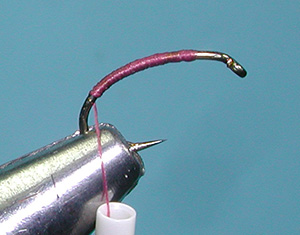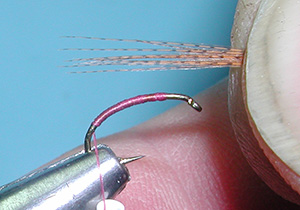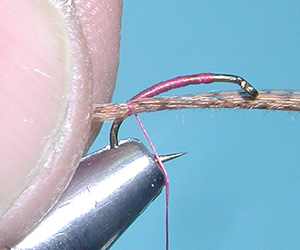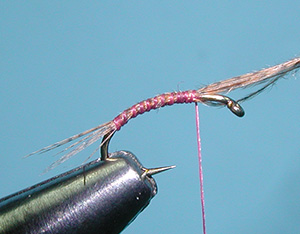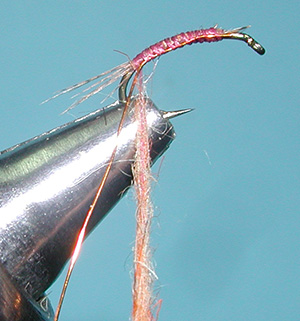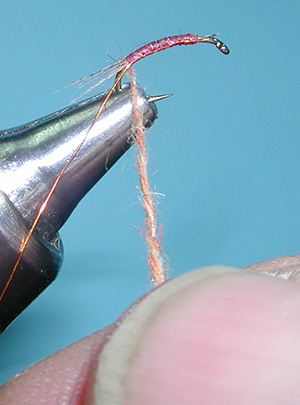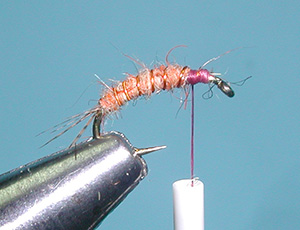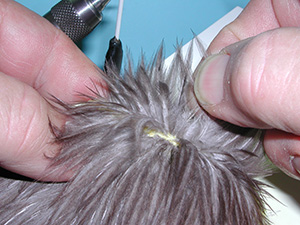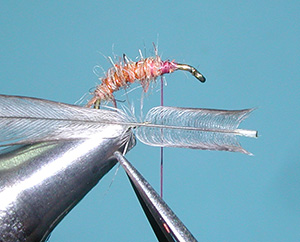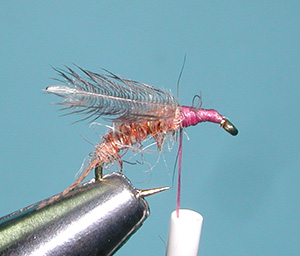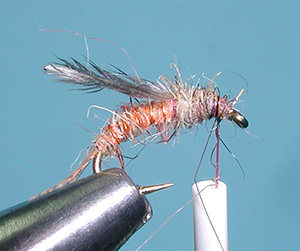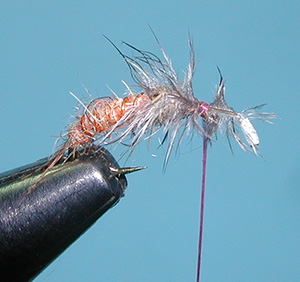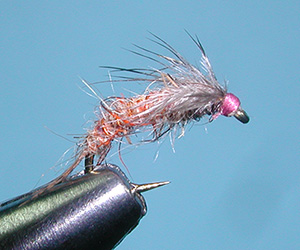Wonder Nymph – a wonderful wingcase
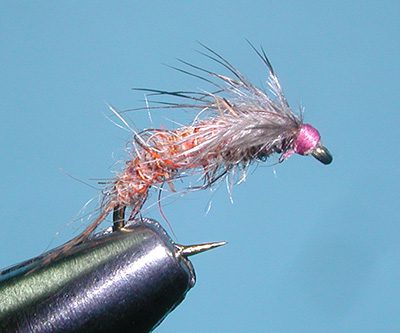
Wonder Nymph, PMD
Tying Instructions
| Materials
to Order Material, click the link |
|
|---|---|
| Hook | TMC 2487, sizes 16-18 |
| Thread | 10/0 Veevus Rusty Brown |
| Head | 10/0 Veevus Rusty Brown |
| Body | Blend of Hareline Dubbing, 50% Rusty Orange and 50% Pale Yellow |
| Thorax | Hareline Dubbing, Dark Hare's Ear |
| Tail | Dyed Mallard Flank Wood Duck Fibers |
| Wingcase | Medium Dun Hen Neck Hackle, fluffy base |
| Ribbing | Small Copper Wire |
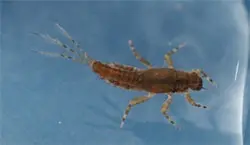

Brad Downey
Wonder Nymph
The Wonder Nymph is a pattern created by the late Brad “Dubbs” Downey, owner of Angler’s Edge in Fort Smith, Montana. Brad had been guiding on the Big Horn since 1983 and emerging PMD’s, as well as Baetis, have been an important pattern on this river system.
Unique Wingcase
The Wonder Nymph is unique by the construction of the wingcase which represents both emerging wings and legs. The base of the Hen Hackle has a very fluffy section that is often discarded when the hackle is used for wet flies. Brad utilized this section by securing the quill section to the hook shank at the base of the thorax and pulling the fluffy section over the thorax as you would do with a flashabou strip on a flashback. Some variations actually do use a piece of flash to do this as well.
Bat Wing Profile
The wingcase has a bat wing profile when completed. The pattern was designed to fish within the film utilizing a light wire hook. To keep the pattern within the film, it is recommended to use a powder floatant, rather than a paste that would mat down the feather fibers. However, this is a versatile pattern that can also be fished deep as a typical nymph with an indicator and weight on the leader. It can also represent a dun that is just emerging from it’s shuck.
Variations
There are a number a number of variations of this pattern depending on how the pattern is fished. Charlie Craven came up with his version utilizing a biot body similar to a biot emerger midge pattern. There is even a John Barr variation utilizing a copper wire body to give the pattern the weight necessary to reach deeper sections of the water column. You can change the coloration of the hareline dubbed body and size of the hook to fish Baetis and Calibaetis hatches.
Variations
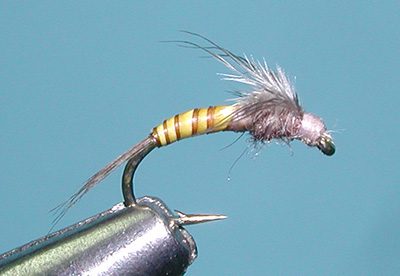
Craven Variation, Baetis
| Hook | TMC 2487, sizes 18-22 |
| Thread | Uni-Thread 8/0 Gray |
| Head | 10/0 Veevus Rusty Brown |
| Body | Blend of Olive Gray Goose Biot |
| Thorax | Gray Superfine |
| Tail | Medium Dun Hen Neck Hackle Fibers |
| Wingcase | Medium Dun Hen Neck Hackle, fluffy base |
| Head | Uni-Thread 8/0 Gray |
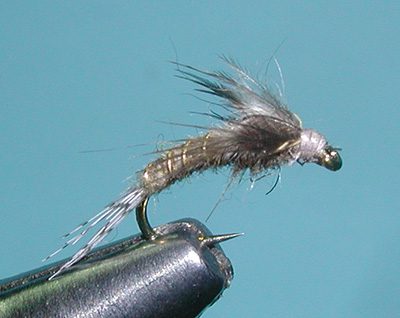
Wonder Nymph, Callibaetis
| Hook | TMC 2487, sizes 16-18 |
| Thread | 8/0 Uni-thread Gray |
| Head | 10/0 Veevus Rusty Brown |
| Body | Blend of Callibaetis Superfine Dubbing |
| Thorax | Hareline Dubbing, Dark Hare's Ear |
| Tail | Mallard Flank Fibers, Natural |
| Wingcase | Grizzly Hen Neck Hackle Feather, fluffy base |
| Ribbing | Small Gold Wire |
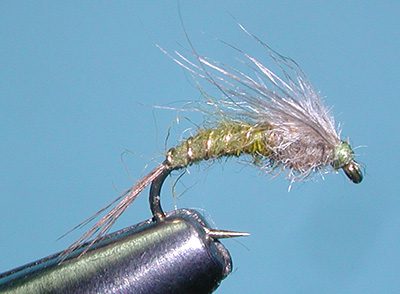
Wonder Nymph, Baetis
| Hook | TMC 2487, sizes 16-20 |
| Thread | 8/0 Uni-thread Olive |
| Head | 10/0 Veevus Rusty Brown |
| Body | Blend of Hareline Dubbing Olive Brown |
| Thorax | Hareline Dubbing, Dark Hare's Ear |
| Tail | Dyed Mallard Flank Wood Duck Fibers |
| Wingcase | Medium Dun Hen Neck Hackle, fluffy base |
| Ribbing | Small Gold Wire |

Wonder Wire, PMD
| Hook | Daiichi 1560, 16-18 |
| Thread | 10/0 Veevus Rusty Brown |
| Head | 10/0 Veevus Rusty Brown |
| Body | Blend of Medium Copper Wire |
| Thorax | Hareline Dubbing, Pale Yellow |
| Tail | Mallard Flank Fibers, Natural |
| Wingcase | Grizzly Saddle Hackle Feather |

